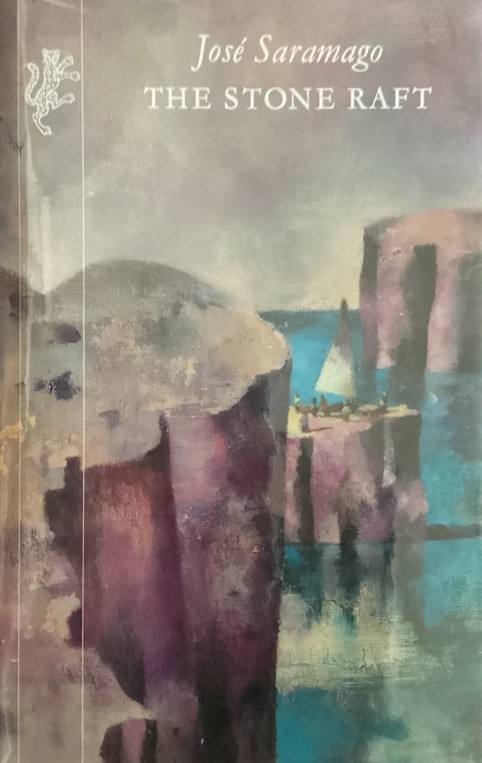Inspiring Older Readers
 posted on 18 May 2025
posted on 18 May 2025
The Stone Raft by Jose Saramago
I’ve seen Jose Saramago’s novel, The Stone Raft cited as an example of ‘magic realism’ – which might immediately alienate a number of potential readers. You’ll find plenty of lengthy and verbose definitions of ‘magic realism’ but I personally like this:
(Magical realism is a) ‘narrative strategy that is characterized by the matter-of-fact inclusion of fantastic or mythical elements into seemingly realistic fiction’ (Augustyn, Encyclopaedia Britannica, 2021).
But as a label, ‘magic realism’ is a hopelessly clumsy tag that many readers have come to associate with complexity and non-linear narratives that make books inaccessible rather than marvellous. Its shortcomings are never better highlighted than by Saramago’s novel which is, I think, better approached as something much simpler and more accessible – an adult fairy tale.
At its centre is a fantastic event – the Iberian Peninsula begins to break away from the main European landmass at the French border and starts to travel the sea in a seemingly guided manner. This remarkable event is presaged by five individuals from both Spain and Portugal who experience unexplained events that are unaccountable but must, in some unexplained way, be associated with this geographical upheaval.
We begin in Portugal where Joana Carda idly marks a line in the ground with a tree branch which, it turns out, no-one can erase and Joaquim Sassa picks up and throws a massively and unfeasibly heavy stone into the sea that travels way out of sight. Jose Anaio steps outside and finds himself followed by a flock of starlings wherever he goes and (a little way into the book) we encounter a widow, Maria Guavaira, who finds an old sock that endlessly unravels. Meanwhile in Spain, the elderly Pedro Orce feels the earth rumble beneath his feet but it’s a rumble that even the most sophisticated scientific instruments can’t detect.
These five will eventually come together and turn the book into a story of identity, love, loss and death as they go on an unlikely road-trip together. And although this is the real focus of the book, the detached peninsula is also a situation that Saramago can use to pass some satirical and pointed comments on world politics, politicians and the power of ‘public sentiment’. He’s especially good at highlighting the vacuous banality of sloganizing: in this world of a free-floating Iberia, the youth of Europe respond by rioting and claiming ‘we are all Iberians too’.
Written and first published in 1986 and not translated into English until 1994, the Nobel Prize for literature came along a couple of years later. Saramago remained a member of the Communist Party all his life and developed a reputation for being something of a pessimist. However, there’s no doubt that in The Stone Raft, he’s having fun and there’s definitely a gentle undertone, even a sort of nostalgic romance at work.
Some readers might also take a little while to adjust to Saramago’s buccaneering prose style which is more concerned with the rhythms of storytelling and speech than the rules of punctuation and sentence structure. But go with the music of the language and you’ll quickly slot into it.
Paperback editions aren’t difficult to find and not overly expensive but the hardback, especially the first edition, can come at a cost.
Terry Potter
May 2025